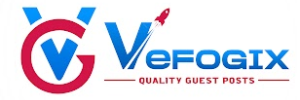Companies must have a strong online presence in the digital environment to attract and retain consumers. On page Seo optimization is one of the most efficient ways to do this. This approach improves search engine ranks by using separate websites. Businesses can also ensure their websites are extra obvious to feasible traffic by using many additives, text, HTML tags, and photos. A well-optimized website gives a higher consumer experience and ranks better in seeking consequences, motivating site visitors to stay longer and look at extra.
The Importance of Quality Content
Effective on-page SEO optimization starts with quality content. Search engines prioritise user queries as relevant, interesting, and instructive material. Companies may build authority in their sector by writing high-quality articles, blog posts, and product descriptions. Including appropriate keywords throughout the material also helps search engines better grasp the subject. In the end, better ranks and more visitors follow from this. Regularly updating material is crucial to keep it current and fresh as search engines like sites offer up-to-date information.
Meta Tags and Their Role
On-page SEO improvement depends much on meta tags. These textual content snippets inform serps and those alike about a web page’s content. For example, the name tag ought to successfully constitute the web page’s content and comprise applicable key phrases. The meta description, alternatively, provides a short evaluation shown in search effects to draw humans to click through. Well-structured meta tags aid in improved ranking and raise click-through rates. Businesses may increase their exposure and get more people by creating interesting and educational meta tags.
Optimizing URL Structure
The URL structure is often neglected in on-page SEO improvement. A clear, descriptive URL lets search engines and people know what a website contains. URLs must be short, include relevant key phrases, and avoid superfluous elements. A long string of numbers and logos is less successful than a user-friendly URL like “example.Com/seo-pointers.” Visitors can quickly tell the page’s content material from the URL alone, which enables ranking and personal experience. Efficient optimization relies upon easy, relevant URLs.
The Importance of Internal Linking
Internal linking is a common tool for improving on-page SEO. Linking to different pages inside your website helps construct a more regular framework that improves navigation and keeps users interested. Internal hyperlinks also help spread page authority across your website online, facilitating search engine crawling and indexing of your pages. When employing internal links, descriptive anchor language that provides context about the connected page is essential. Directing users to relevant material increases SEO and enhances the user experience.
Image Optimization Techniques
While images may greatly improve a web page’s attractiveness, they have to be optimized to support on-page SEO improvement. Large picture files might increase loading times, compromising user experience and search ranks. To help images be optimised, use appropriate file formats, compress photos for quicker download, and provide alt text characterizing the image material. This enables search engines to index your photos and helps individuals with visual impairments access them. By using image optimization, companies may improve their online visibility.
Mobile Optimization is Essential
Mobile optimization has become a vital part of on-page SEO improvement with the growing usage of mobile devices. Websites have to be responsive; they should fit various screen sizes perfectly. A mobile-friendly design affects search engine rankings and enhances user experience as Google values mobile-optimized web pages. Fast loading times, simple navigation, and legible font sizes should be priorities for companies to guarantee appropriate mobile optimization. A mobile-responsive website can help companies to reach a larger audience and increase their search exposure.
The Role of User Experience
On-page SEO improvement is directly influenced by user experience (UX). Search engines want to provide the finest feasible outcomes for visitors, so they consider elements like page load speed, mobile friendliness, and general design. A well-organized site that maintains user interest is probably going to rank better. Intuitive navigation, obvious calls-to-action, and aesthetically pleasing designs are among the features that greatly improve UX. Businesses can increase their SEO and build consumer loyalty and happiness by prioritising user experience.
Monitoring and Analytics
Effective on-page search engine optimization optimization relies upon consistent monitoring and evaluation. Tools consisting of Google Analytics offer insightful evaluation of page performance, site visitors’ resources, and user behaviors. Businesses might find areas for improvement using data analysis and, hence, change their plans. Regularly analyzing statistics like organic traffic, average consultation time, and jump rates enables groups to understand what works and what doesn’t. Businesses might also enhance their optimization tasks and preserve a competitive gain inside the virtual environment by being knowledgeable and converting with the instances.
Conclusion
A key component of any virtual advertising plan is on-web page SEO. Focusing on great content, optimizing meta tags, refining URL architectures, and strengthening consumer confidence allows businesses to significantly increase their online presence. These initiatives will be strengthened even further by regular monitoring and analytics-based modifications. Examining tools like vefogix.in may help anyone wishing to optimize their internet presence by offering insightful analysis and assistance. These tactics help companies to get more traffic, involve their audience, and increase sales.

